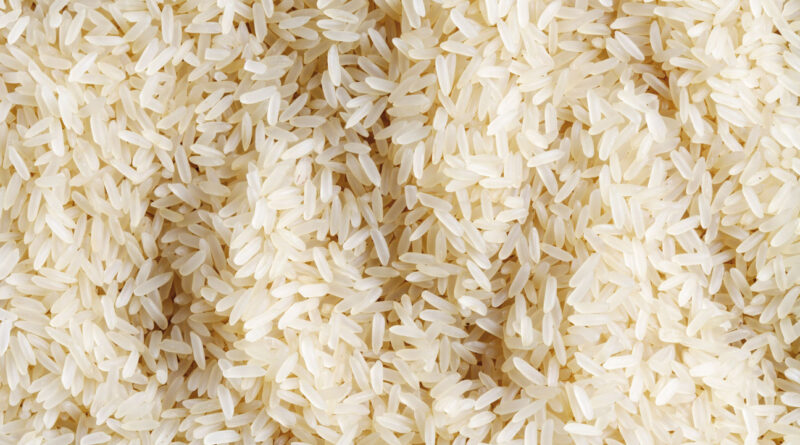The paradox of bumper crop and rising cereal prices
By Harish Damodaran
Cereal inflation based on the official consumer price index has been ruling at double digits year-on-year since September 2022.
For a majority of Indians – the 813.5 million persons covered under the National Food Security Act (NFSA), out of a total 1,400 million-plus population – that didn’t matter beyond a point, until recently.
The reason: All NFSA beneficiaries, before January 2023, were getting 10 kg of rice or wheat per month practically free of cost. Since that more or less met their entire requirement – the last national sample survey of 2011-12 revealed the per capita cereal consumption at 11.22 kg for rural and 9.28 kg for urban India – they hardly had to buy grain from the open market.
But from the new calendar year, the NFSA entitlement was restored to the original 5 kg/person/month level prevailing prior to April 2020. The same ration cardholders, now having to purchase rice and wheat from the open market, are also feeling the pinch of cereal inflation that has nearly doubled from 6.9% to over 13% between July 2022 and July 2023.
According to the department of consumer affairs, the all-India modal (most-quoted) retail price of rice on September 3 was at Rs 40 per kg, compared to Rs 35 a year ago and Rs 30 two years ago, with these at Rs 28, Rs 25 and Rs 22 per kg for wheat.
Covid protection
During the three post-Covid financial years (April-March) of 2020-21, 2021-22 and 2022-23, the offtake of rice and wheat from government warehouses totaled 92.9 million tonnes (mt), 105.6 mt and 92.7 mt respectively, way above the average lifting of 62.5 mt during the first seven years after the implementation of the NFSA from 2013-14 and 48.4 mt in the seven years preceding the law.
The public distribution system (PDS) emerged as the most effective social safety net during the pandemic. There was no dearth of grain for the poor and vulnerable, even amid the massive job and incomes losses following the economic lockdowns.
Interestingly, during this period, India’s exports of rice and wheat also hit all-time-highs, aggregating 19.8 mt in 2020-21, 28.4 mt in 2021-22 and 27 mt in 2022-23. This was against 12.9 mt, 12.1 mt and 9.7 mt in 2017-18, 2018-19 and 2019-20.
In other words, it was a time of abundance. Not only was there more than enough grain to give out free, the country could also ship out record quantities.
The contrast
Compare that to the present, where double-digit cereal inflation co-exists with what logically would suggest a shortage of grain.
Depleting rice and wheat stocks in government godowns – these, at 65.5 mt on August 1, were at a six-year-low for this date – has led the Centre to stop issuing the 5-kg of additional grain per month to NFSA beneficiaries from January this year. The ruling Congress in Karnataka has been forced to give cash in lieu of an extra 5-kg free rice that was promised for all members of poor households in the party’s Assembly election manifesto.
But the Centre’s actions haven’t been limited to restoring the PDS grain allocation to the old 5 kg/person/month under NFSA.
Since May 2022, it has banned exports of wheat. In June this year, stock limits were imposed, with wholesale traders and big retailers not being allowed to hold more than 3,000 tonnes of the cereal at any time. In July, exports of all white (non-parboiled) non-basmati rice were prohibited. On August 25, a 20% duty was levied on parboiled non-basmati rice exports. Even basmati wasn’t spared; only grain priced above $1,200 per tonne is being permitted to leave the country.
The Centre’s actions point to grain shortage not just in public warehouses, but also in the open market. The imposition of export curbs and stockholding limits are essentially aimed at improving domestic availability of grain and preventing any “hoarding and unscrupulous speculation” that normally ensue from shortages.
The paradox
But here’s the paradox: Going by official production statistics, there’s no grain shortage at all.
The accompanying table shows a 11.2 mt increase in India’s rice output between 2020-21 and 2022-23 (the agriculture years from July-June). Wheat production, too, has registered an overall 3.2 mt rise, notwithstanding reports of yield losses from the heat wave in March 2022 and unseasonal excess rain in March 2023.
Domestic availability of grain is, of course, not a function of output alone. To the extent what is produced also gets procured by government agencies and is exported out, it leaves that much less grain for the domestic market.
In this case though, higher production, as per the agriculture ministry’s estimates, isn’t reflected in procurement. Government grain purchases have actually fallen – and particularly sharply for wheat. Even after netting out procurement and exports, the domestic market supplies of both rice and wheat have apparently gone up in the last two years!
It raises the question: If there is more wheat and rice in the market, shouldn’t that exert downward pressure on prices? How does it square with double-digit inflation? One possibility is that the NFSA beneficiaries who were earlier getting 5 kg of extra grain are now buying the same from the market, thereby driving up prices. But those purchases should plausibly be offset by lower government procurement. Moreover, cereal inflation has been in double digits since last September, even before the additional free grain allocations stopped.
Whichever way one looks at it, there is a dissonance between the government estimates of record rice and wheat production and sustained double-digit cereal inflation. The various “supply-side” actions, in the form of export bans and trade controls, are more suggestive of short supply than abundance of grain in the system.
This article has been republished from The Indian Express.

